Recent Articles
Popular Makes
Body Types
2017 Honda Ridgeline Pros and Cons
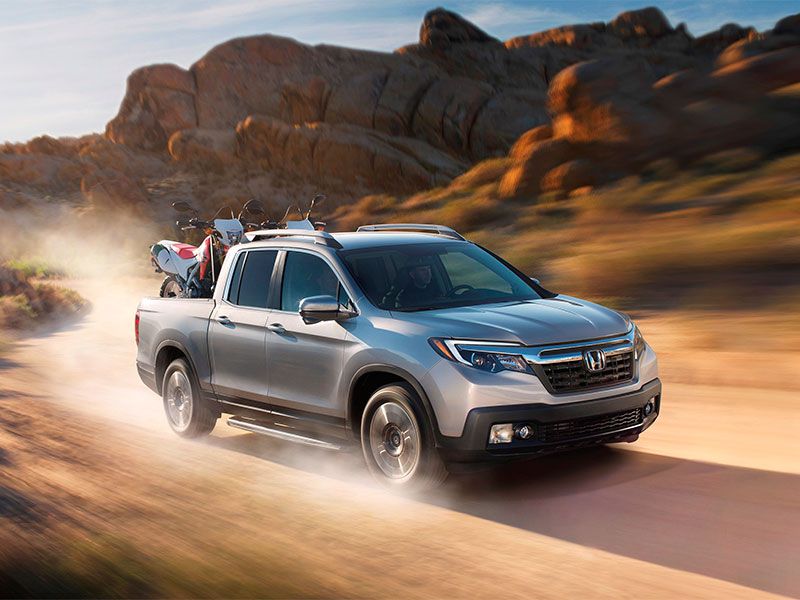
2017 Honda Ridgeline on road with ATVs in cargo bed ・ Photo by Honda
There’s a new midsize pickup truck in town: the 2017 Honda Ridgeline. Missing from the Honda lineup since it was discontinued after the 2014 model year, the Ridgeline reappears with an all-new exterior, interior, and powertrain. Unique in the class, Ridgeline comes with four-wheel independent suspension, unit-body construction, a dual-action tailgate, in-bed trunk and standard front-wheel drive (all-wheel drive is available on all trim levels). Ridgeline prices range from $29,475 to $42,870 with a 3-year/36,000-mile limited vehicle warranty and a 5-year/60,000-mile powertrain limited warranty. Honda's pickup competes with the Toyota Tacoma, Chevrolet Colorado/GMC Canyon, and Nissan Frontier in the midsize pickup class.
To help potential buyers, let's take a look at the Ridgeline's pros and cons.
Pro: New Exterior Design
The first-generation Ridgeline (2006-2014) didn’t look like every other midsize pickup on the market, and for some, that was a negative. The new Ridgeline adopts a much more conventional appearance. The cab wall and bed rails meet at a right angle, giving the Ridgeline a traditional “three-box” profile. An all-new front fascia projects a truck image, shedding the “Pilot with a bed” look that detractors disliked in the first-generation vehicle. The Ridgeline also gets Honda’s typical high level of fit and finish, with nice even panel gaps, deep, rich paint, and shiny, tasteful chrome accents. There’s even a Black Edition with 18-inch black wheels and blacked-out trim that looks sporty and a bit menacing.
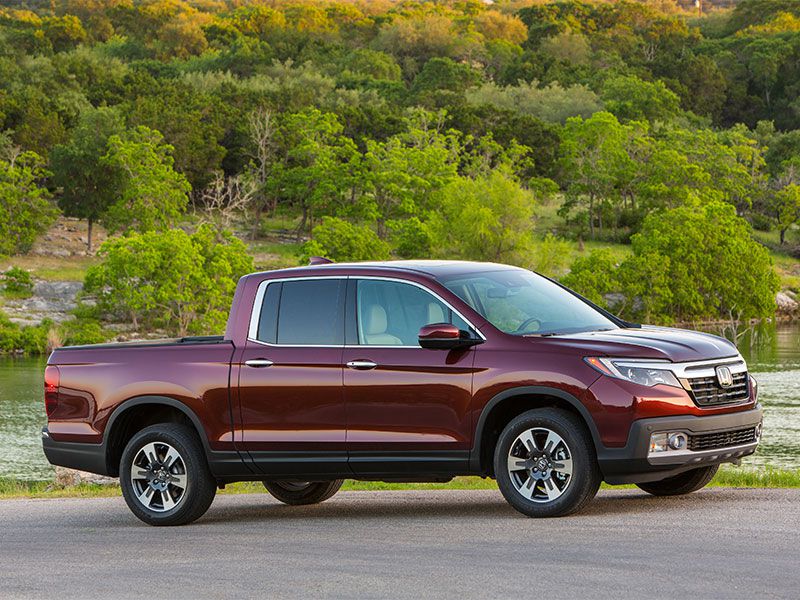
Photo by Honda
Pro: New Powertrain
The 2017 Honda Ridgeline benefits from a new powertrain, the same 3.5-liter direct-injected V6 that comes with the Pilot, hooked up to a 6-speed automatic transmission and available all-wheel drive. The V6 produces 280 horsepower and 262 lb.-ft. of torque. The new engine operates with Honda’s i-VTEC variable valve timing and is rated by the EPA to achieve 19 MPG city/26 MPG highway/22 MPG combined with front-wheel drive and 18/25/21 with awd. All-wheel-drive Ridgelines come with Intelligent Variable Torque Management (iVTM-4) torque vectoring, which improves cornering performance and feel. The new powertrain makes the Ridgeline a more efficient and powerful truck, enabling improved performance in all areas.
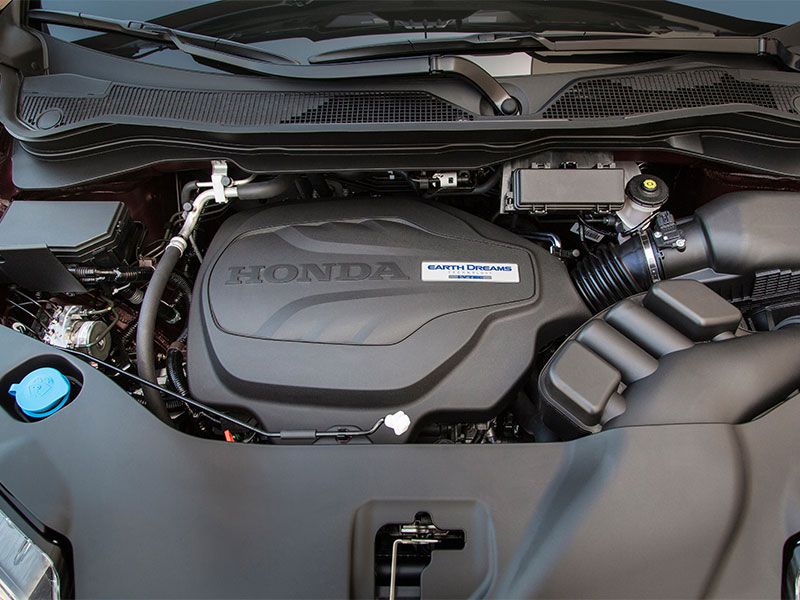
Photo by Honda
Pro: Payload and Cargo Handling
Anyone who claims the Ridgeline isn’t a “real” truck hasn’t studied the spec sheet. An impressive maximum payload of 1,584 lbs – best-in-class. While the bed is short at 64.0 inches, it is 50.0 inches wide between the wheel wells. The load floor can be extended to 83.0 inches with the tailgate down which means that full sheets of 4-foot x 8-foot (48-inch x 96-inch) plywood can be loaded with just a small overhang. 350-lb capacity tie down cleats are standard. The tailgate opens in two directions: Folding down, like a traditional tailgate, or swinging from a left hand hinge, like a door. A weather-sealed locking in-bed trunk lives beneath the load floor, capable of swallowing 7.3 cubic feet of cargo.
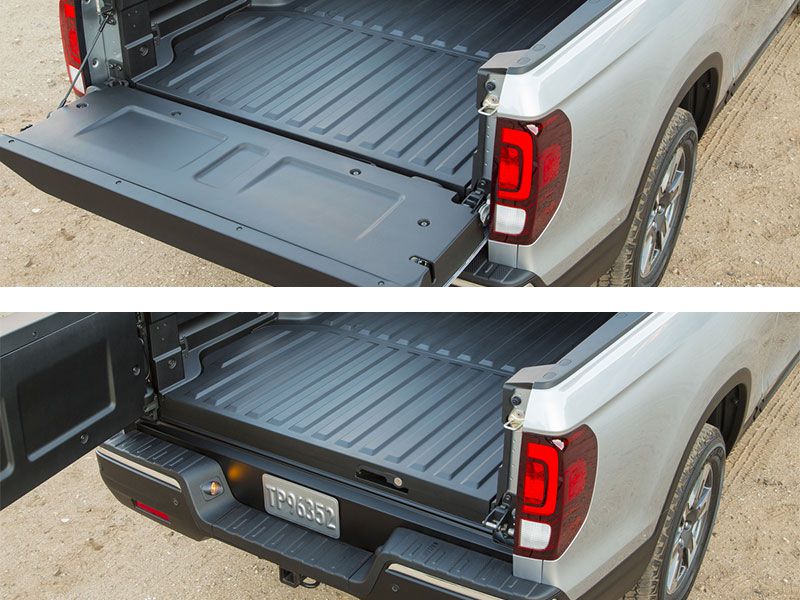
Photo by Honda
Pro: Safety
The 2017 Ridgeline comes with a full package of standard passive safety systems, including Honda’s ACE (Advanced Compatibility Engineering) Body Structure, six airbags, LATCH connectors for child safety seats, child-proof rear door locks, Vehicle Stability Assist with Traction Control, anti-lock braking, electronic brake distribution, brake assist, rearview camera, and tire pressure monitoring. The big pro for Ridgeline is available Honda Sensing, which includes Road Departure Mitigation, Collision Mitigation Braking, Honda LaneWatch, Lane Keeping Assist, Adaptive Cruise Control, Auto High-Beam Headlights and Blind Spot Information system with Cross Traffic Monitor. The Insurance Institute for Highway Safety (IIHS) and SaferCar.gov have not yet rated the 2017 Ridgeline.
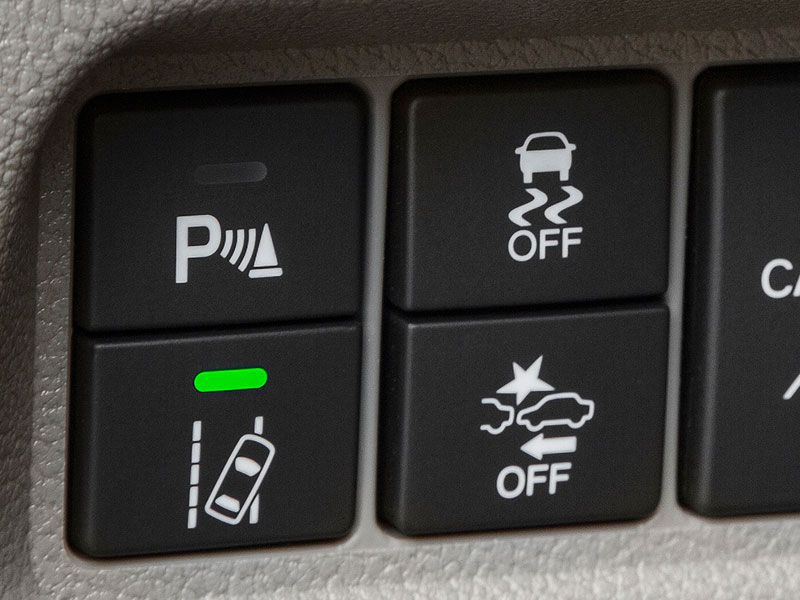
Photo by Honda
Pro: Truck Bed Sound System
A pickup truck can be party central when you're tailgating at a sporting event or concert. The new Ridgeline can be equipped with an innovative in-bed sound system like no other. Six exciters are attached to the backs of the bed walls, and, in effect, turn the bed itself into a set of speakers. Clear sound can be produced from the in-dash sound system, with no visible speaker grilles. The system is weatherproof and resistant to damage from cargo. As an added bonus for tailgating, the in-bed trunk can be filled with ice and beverages, and later drained by pulling a plug in the bottom. Standard truck bed lights and an available 150-watt/400-watt power outlet complete the picture.
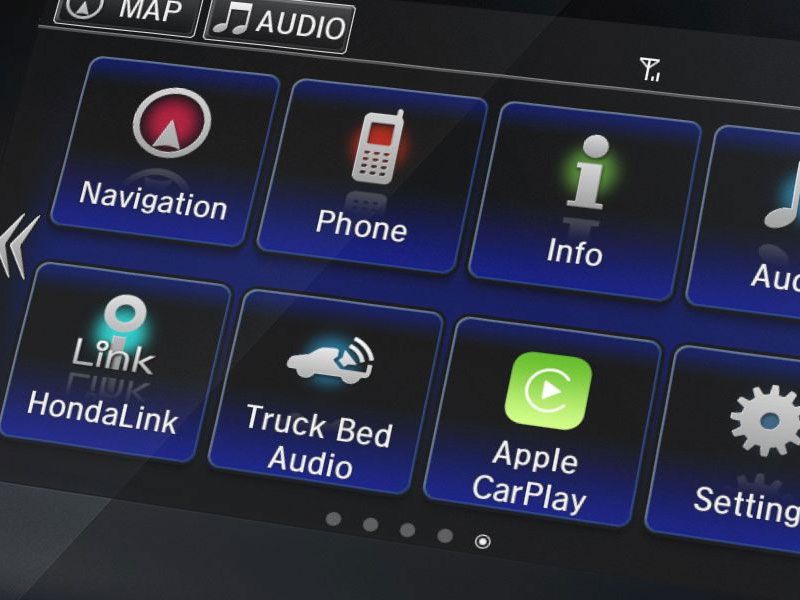
Photo by Honda
Con: Unit-body Compromises
There’s a reason pickup truck designers cling to body-on-frame design: It can be extremely robust, and it allows for flexible customization. The Ridgeline’s engineers chose unit-body (no frame separate from the body) construction, which means that the truck comes in one basic size and shape. Honda points to Ridgeline’s structural rigidity as an asset, but there are situations where some flex is a good thing. In particular, the fact that the Ridgeline’s bed and cab are one unit means that only one bed length, only one style of bed (no stepside or stakebed available or possible) can be ordered or fit. For most buyers, this is not an issue; for some potential commercial buyers, this may be a deal breaker.
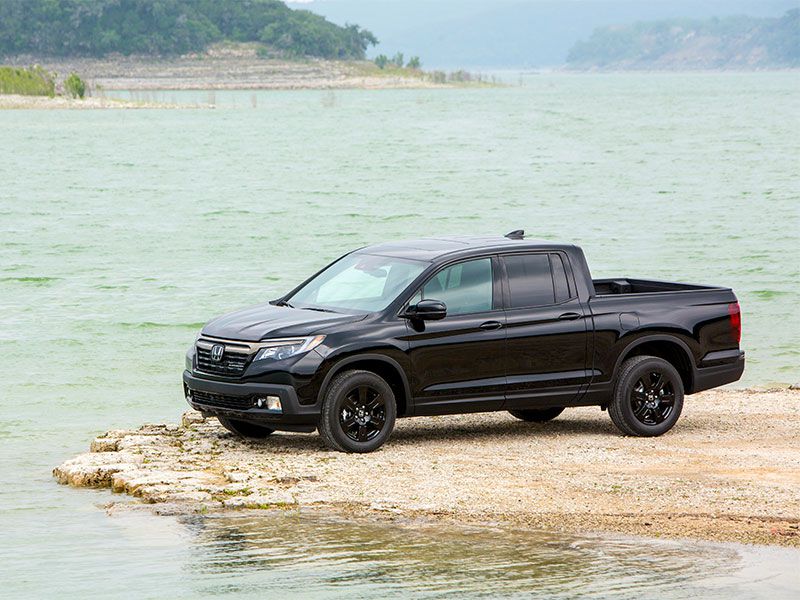
Photo by Honda
Con: Limited Configurations
As restricted by the unit-body design and just one engine/transmission choice, Ridgeline trim levels are defined by cosmetic, technology, and add-on equipment, but the basic vehicle stays the same. The trim levels are RT, RTS, Sport, RTL, RTL-T, RTL-E, and Black Edition. If that works for you, that’s great. But the main competitors, Toyota Tacoma and Chevrolet Colorado/GMC Canyon, each have multiple available powertrains. Tacoma offers a 4-cylinder or 6-cylinder gasoline engine, while Colorado and Canyon add a 4-cylinder. The Tacoma, Colorado, and Canyon are all available with Double (Crew) Cab or Access (Extended) Cab, short bed or long bed setups. The Tacoma leads the pack with 29 unique configurations. The range of the competitors’ offerings far outpaces the Ridgeline’s lineup.
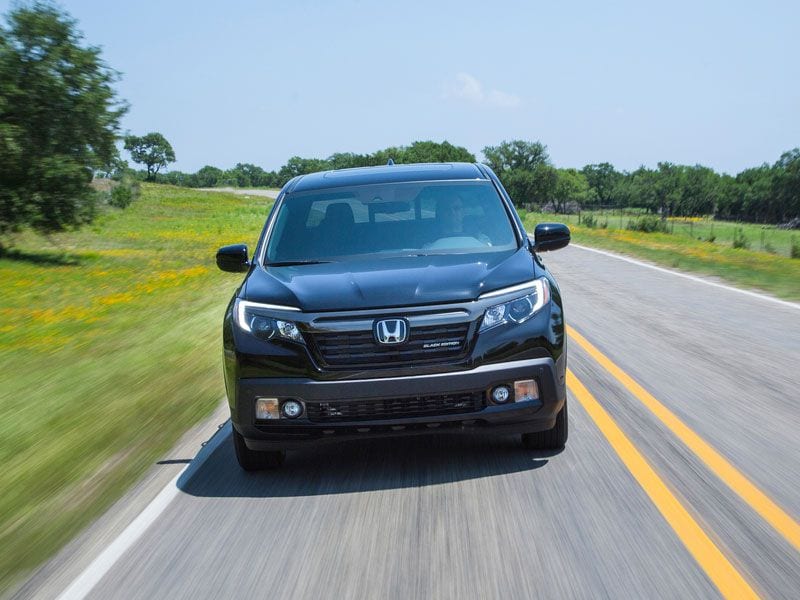
Photo by Honda
Con: Tow Rating
With front-wheel drive, the 2017 Honda Ridgeline is rated to tow 3500 lb. Add available all-wheel drive, and that capacity increases to 5000 lb. In standard configuration, the Tacoma gets a 3500-lb. rating, too. Add the V6 Towing Package, and you can tow 6400 lb. The Canyon/Colorado with a 4-cylinder gasoline engine matches the 3500-lb rating. The V6 can tow up to 7000 lb., and the diesel is the champ with a 7700-lb. tow rating. For some owners, these numbers won’t ever come into play, but for others who already have a camper or a boat they need to tow, maximum conventional trailering is the first specification they examine. While the Ridgeline’s numbers are respectable, they are far from best in class.
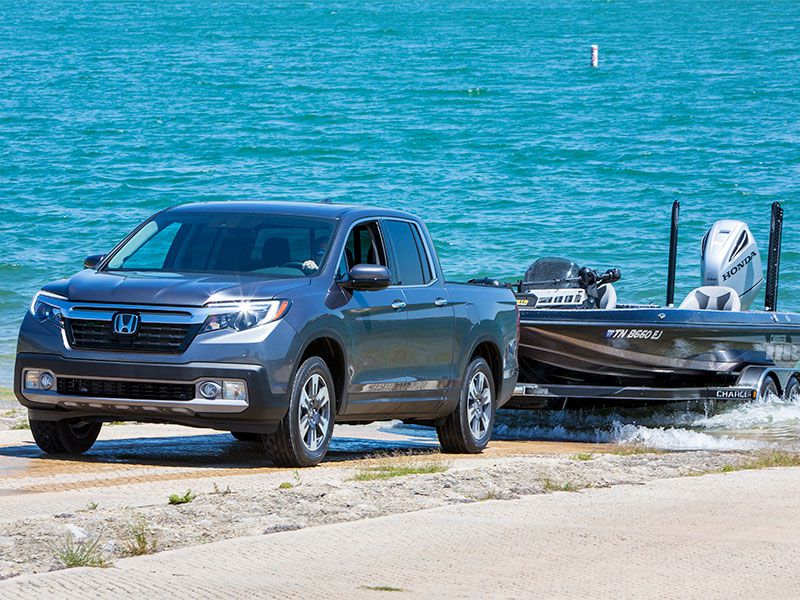
Photo by Honda
Con: Starting Price
The base 2017 Honda Ridgeline 2WD RT starts at $29,475, which is a pretty big chunk to swallow. In contrast, a base 2017 Toyota Tacoma SR carries a $24,120 starting price; a 2017 GMC Canyon SL starts at $21,880; a 2016 Chevrolet Colorado Base starts at $20,995; and a 2016 Nissan Frontier King Cab S starts at $18,290. Granted, these examples are base models with 4-cylinder engines and few accessories, but that’s all some buyers are looking for. Another challenge for Ridgeline: The 2017 Ford F-150 XL carries a starting price of just $27,735, which means that buyers might consider a fullsize pickup truck as well.
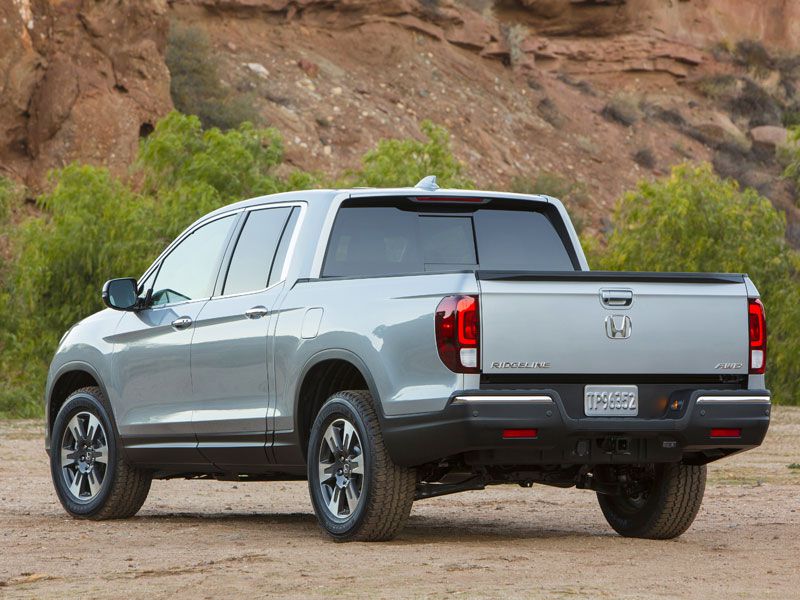
Photo by Honda
All Things Considered
Weighing the pros and cons, the 2017 Honda Ridgeline comes out pretty well. Fans of the original Ridgeline (and there are plenty of them) will appreciate the improvements that have been made to their favorite small pickup. For buyers who want the utility of a pickup truck combined with the comfort and everyday drivability of a sport-utility vehicle, the Ridgeline manages the compromise very well. Image-conscious truck guys will have an easier time digesting the new exterior design, and tailgaters will love the in-bed trunk, lighting, and sound system. Will the Ridgeline convert Toyota, Chevy, GMC, and Nissan truck buyers? Some, for sure. But the competition is made alll richer with the Honda's unit-body approach to the traditional pickup.
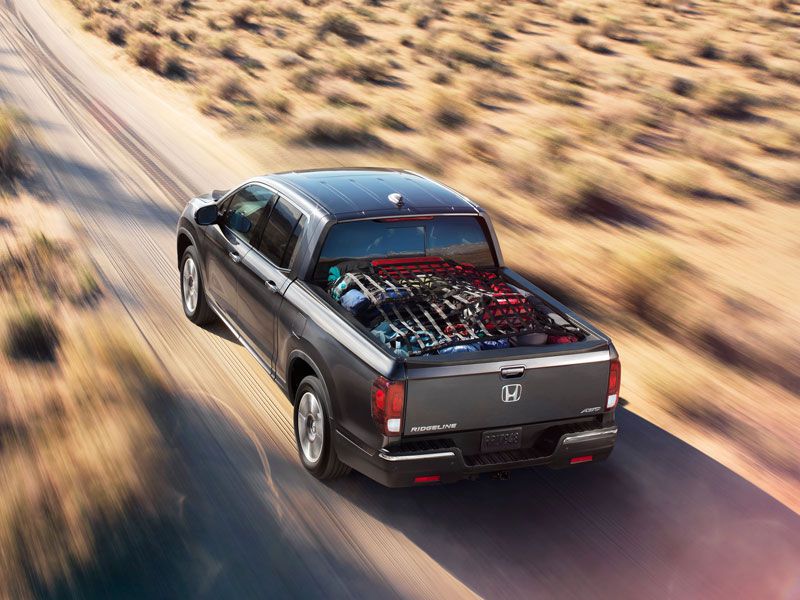
Photo by Honda